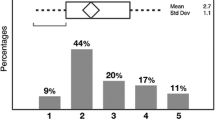Abstract
Gold mining and deforestation in the Brazilian Amazon are increasing mercury pollution of the extensive water system, exposing riverine populations to organic mercury through fish-eating. The aim of the present study was to evaluate the effect of such exposure on motor performance. This cross-sectional study was carried out in May 1996, in a village located on the banks of the Tapajós river in the Amazonian Basin, Brazil. Information concerning sociodemographics, health, smoking habits, alcohol drinking, dietary habits and work history were collected using an interview-administered questionnaire. Mercury concentrations were measured by cold vapor atomic absorption in blood and hair of each participant, of whom those aged between 15 and 79 years were assessed for motor performance (n=84). Psychomotor performance was evaluated using the Santa Ana manual dexterity test, the Grooved Pegboard Fine motor test and the fingertapping motor speed test. Motor strength was measured by dynamometry for grip and pinch strength. Following the exclusion of 16 persons for previous head injury, working with mercury in the gold-mining sites, or for diabetes, the relationship between performance and bioindicators of mercury was examined using multivariate statistical analyses, taking into account covariables. All participants in the study reported eating fish, which comprised 61.8% of the total meals eaten during the preceding week. The median hair total mercury concentration was 9 μg/g. Organic mercury accounted for 94.4 ± 1.9% of the total mercury levels. Multivariate analysis of variance indicated that hair mercury was inversely associated with overall performance on the psychomotor tests, while a tendency was observed with blood mercury. Semipartial regression analyses showed that hair total mercury accounted for 8% to 16% of the variance of psychomotor performance. Neither hair nor blood total mercury was associated with the results of the strength tests in women and men. Although dose-effect relationships were observed in this cross-sectional study, they may reflect higher exposure levels in the past. The findings of this study demonstrated neurobehavioral manifestations of subtle neurotoxic effects on motor functions, associated with low-level methylmercury exposure.
Similar content being viewed by others
Author information
Authors and Affiliations
Additional information
Received: 10 December 1998 / Accepted: 2 November 1999
Rights and permissions
About this article
Cite this article
Dolbec, J., Mergler, D., Sousa Passos, CJ. et al. Methylmercury exposure affects motor performance of a riverine population of the Tapajós river, Brazilian Amazon. Int Arch Occup Environ Health 73, 195–203 (2000). https://doi.org/10.1007/s004200050027
Issue Date:
DOI: https://doi.org/10.1007/s004200050027




